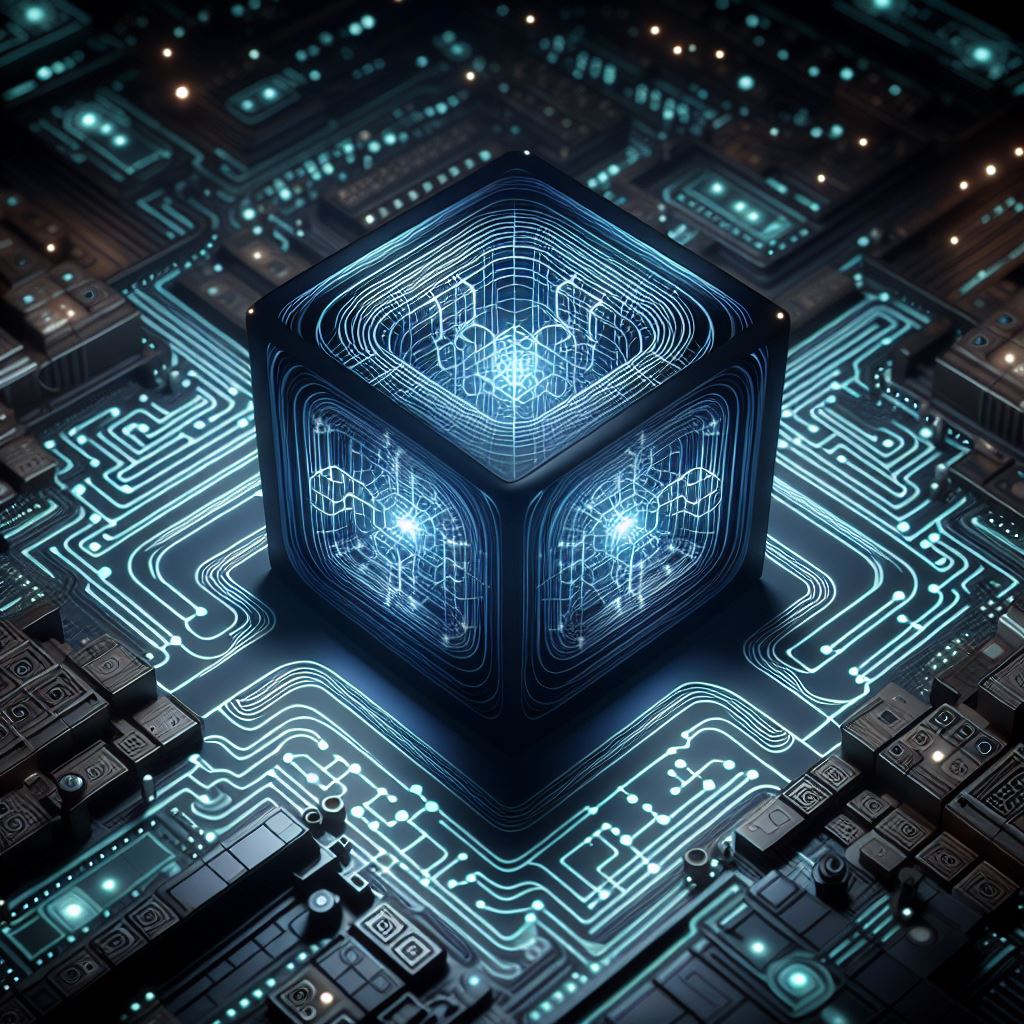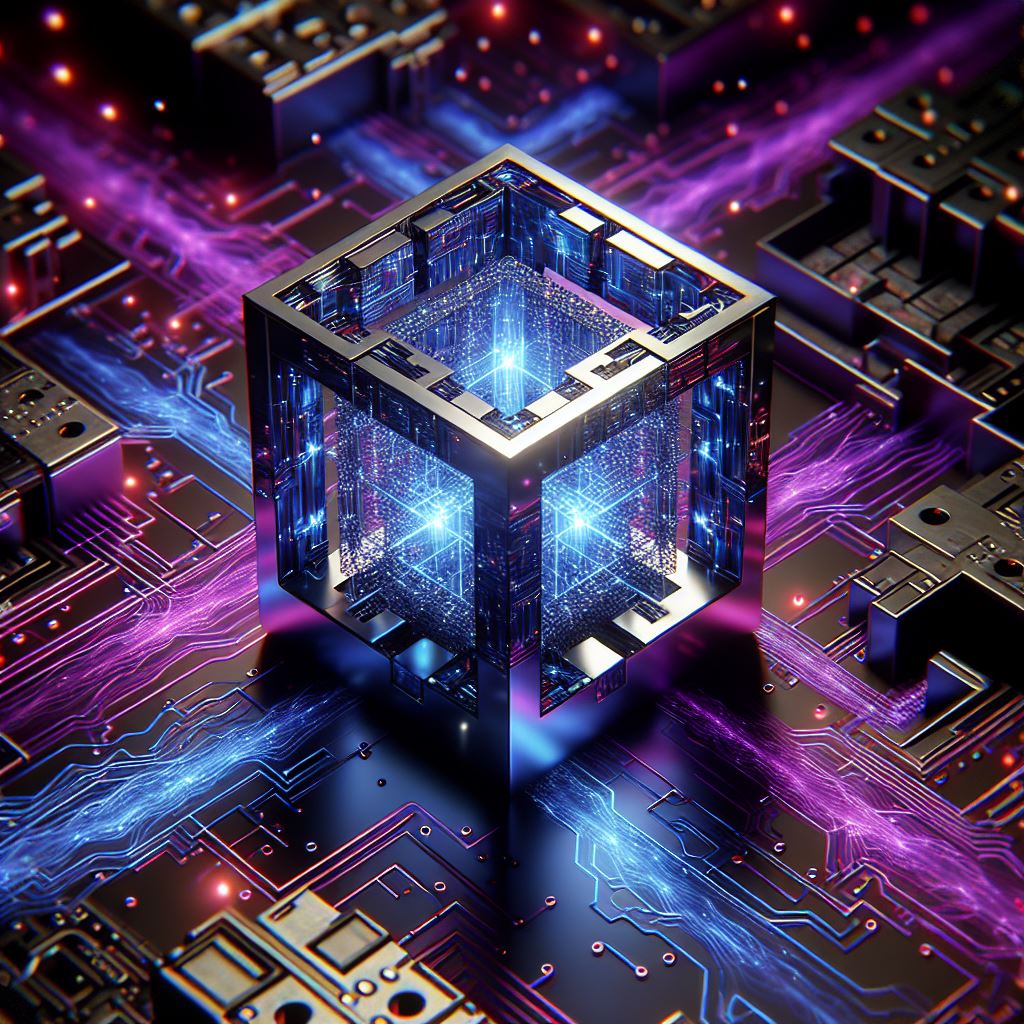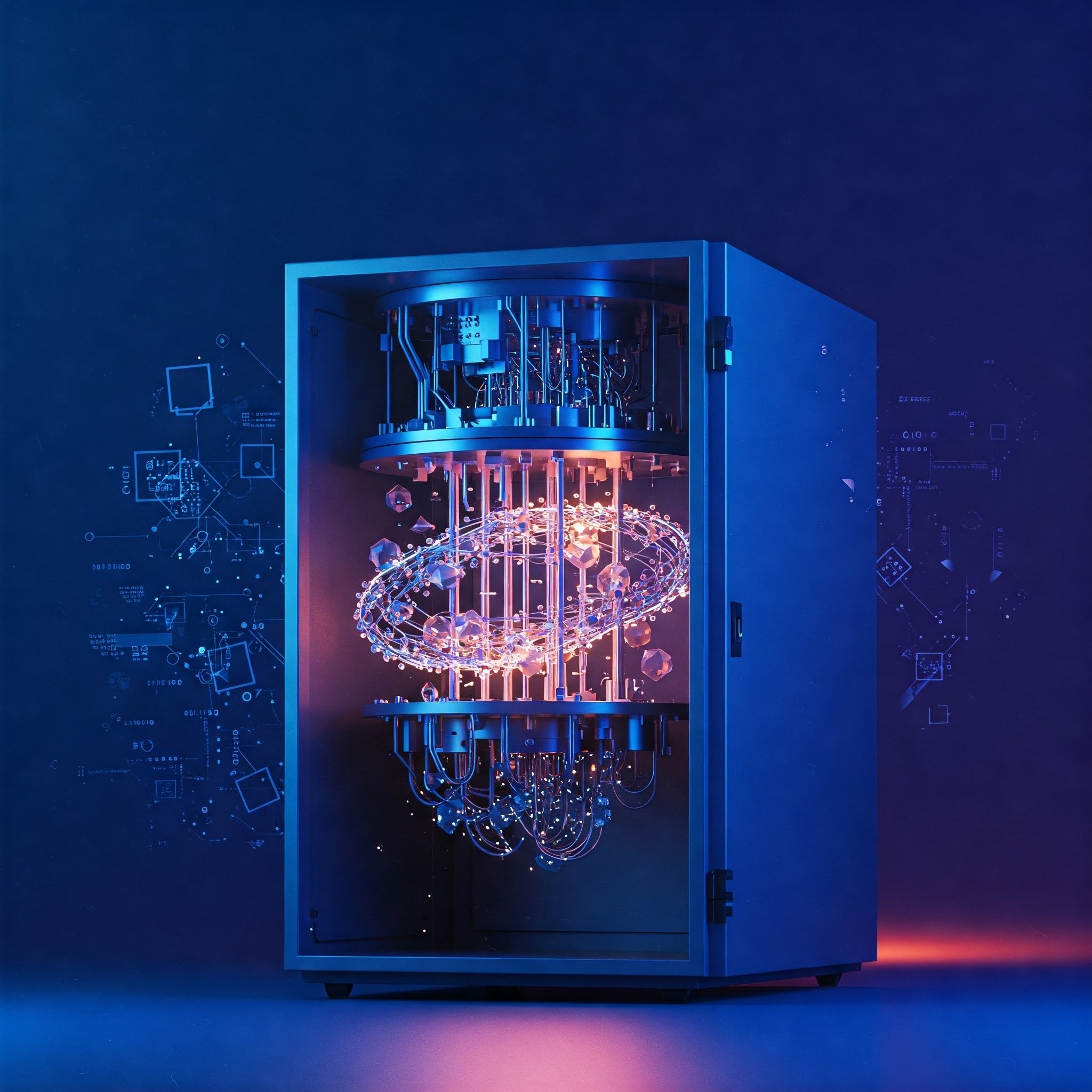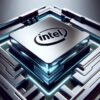Welcome to the world of qubits, the revolutionary building blocks of quantum computing that promises to unlock exponential processing power, unprecedented security, and solutions to complex problems previously thought to be unsolvable.
By leveraging the principles of superposition, entanglement, and interference to perform calculations, I’ll explain why quantum computing is transcending the limitations of classical computing.
First, what is a Qubit? A qubit (quantum bit) is a basic unit of quantum information. It’s similar to a classical computer bit, but with one HUGE difference…
Qubits can be both 0 and 1 at the same time!
This is called superposition. It’s a fundamental property of qubits. In simple terms, superposition means that a qubit can exist in multiple states simultaneously, which is different from classical bits that can only be 0 or 1. Think of it like a coin. It can either be heads or tails, but a quantum coin (or qubit) can exist as both heads AND tails at the same time!
This property allows qubits to process multiple possibilities simultaneously, making quantum computing incredibly powerful.
Entanglement is another fascinating concept in quantum mechanics. Entanglement occurs when two or more qubits become connected in such a way that their properties are correlated, regardless of the distance between them.
Think of it like two dancers performing a choreographed routine. Even if they’re on opposite sides of the stage, they can still be perfectly in sync.
When something happens to one qubit, it instantly affects the other entangled qubits, regardless of the distance between them. This effect happens even faster than the speed of light!
Interference is a third key concept in quantum computing. In quantum mechanics, interference occurs when two or more quantum waves overlap, resulting in a new wave pattern.
This phenomenon allows qubits to perform calculations that are not possible classically. By carefully controlling the interference between qubits, quantum computers can solve complex problems exponentially faster than classical computers.
Superposition, entanglement, and interference are the core features that enable quantum computers to solve specific problems much faster than classical computers.
Qubits are the building blocks of quantum computers, solving problems that are too hard for regular computers. When I say that qubits are the “building blocks” of quantum computers, I mean that they are the fundamental components that make up the quantum computer.
Think of it like building with LEGO blocks:
- Each LEGO block is a small, individual piece that can be connected to other blocks.
- By combining many LEGO blocks, you can build a large and complex structure, like a castle or a spaceship.
- In the same way, qubits are like individual LEGO blocks that can be connected and combined to build a quantum computer.
As mentioned, combining multiple qubits, quantum computers perform complex calculations and operations that are beyond the capabilities of classical computers.
Let’s look at Speed alone!
- Classical Computers: The fastest ones can do quadrillions of calculations per second.
- Quantum Computers: Google’s quantum computer solved a problem in 200 seconds that would take the fastest classical computer 10,000 years! That’s like comparing a few minutes to several millennia.
So, qubits are the basic units that make up the quantum computer, just like LEGO blocks are the basic units that make up a LEGO structure! In theory, there’s no strict limit on the number of LEGO blocks (qubits) that can be used to build a quantum computer. However, as the number of qubits increases, the complexity & difficulty of controlling and manipulating the qubits grow exponentially.
Currently, the largest quantum computers have over 1,000 qubits, with some systems reaching as high as 5,000-6,000 qubits. However, researchers are actively exploring new architectures, materials, and techniques to overcome the challenges and push the limits of quantum computing.
- Space and size: As the number of qubits increases, the physical space required to accommodate them grows. This can lead to issues with heat dissipation, noise, and control.
- Energy consumption: Operating and controlling a large number of qubits requires significant energy. As the number of qubits grows, energy consumption becomes a concern.
- Materials and manufacturing: The development of new materials and manufacturing techniques will be necessary to support the creation of large-scale quantum computers.
- Error correction: As the number of qubits increases, errors and noise become more significant. Developing robust error correction methods is essential.
- Scalability: Currently, most quantum computers are small-scale and can only handle a limited number of qubits. Scaling up to thousands or millions of qubits is a significant challenge.
- Control and calibration: As the number of qubits grows, the complexity of controlling and calibrating each qubit increases, making it harder to maintain coherence and accuracy.
- IBM’s Condor QPU is about the size of a refrigerator (around 2-3 feet wide and 6-7 feet tall) and contains 1,121 qubits.
- D-Wave’s Advantage QPU is roughly the size of a large industrial freezer (around 4-5 feet wide and 10-12 feet tall) and contains 5,760 qubits.
- Rigetti’s Aspen QPU is about the size of a large server rack (around 2-3 feet wide and 4-5 feet tall) and contains 128 qubits.
- A small research lab might have 1-5 quantum computers, each with a small number of qubits (e.g., 10-50 qubits).
- A larger research center or university lab might have 10-20 quantum computers, with a mix of small and larger systems (e.g., 50-100 qubits).
- A dedicated quantum computing datacenter might have 50-100 quantum computers, with a range of systems from small to large (e.g., 10-1,000 qubits or more).
AND the good things? What will Qubits help us to achieve?
Qubits will continue to help us provide super-secure encryption methods for “unbreakable codes” (Hack proof super-secure encryption methods for online transactions and communication), optimizing complex systems (i.e. traffic flow: congestion and efficiency and/or predicting financial trading, trends & markets), simulating how molecules and materials behave (discoveries in medicine, energy and material science) and so much more…
Other advancements will help us to breakthroughs and innovation that will transform industries and our lives!
- Advances in error correction methods will enable us to build larger-scale quantum computers.
- New / Emerging “qubit” technologies, such as topological qubits (Microsoft’s Majorana) & Superconducting qubits (Google’s Willow), may offer improved error-prone, scalability and control.
- Hybrid approaches: Combining different quantum computing architectures and technologies may help overcome current limitations.
- While there’s no strict limit on the number of qubits, the challenges and physical constraints will require innovative solutions to achieve large-scale, practical quantum computing.
In simple terms, qubits are special units of information that can be many things at once and connect with each other in unique ways. They’re the key to building powerful quantum computers that can solve problems that are too hard for regular computers. In terms of quantum volume, which is a measure of a quantum computer’s processing power, Honeywell has developed a quantum computer with a quantum volume of 64, making it the highest performing quantum computer available.

There are several types of qubits, each with its own unique characteristics and advantages. Here are some of the most common types of qubits:
- Superconducting Qubits
- Use superconducting materials to store quantum information
- Require extremely low temperatures (near absolute zero)
- Fast gate times, high fidelity quantum operations
- Prone to errors due to noise and interference
- Topological Qubits
- Use exotic materials called topological insulators to store quantum information
- More resistant to errors due to noise and interference
- Potential for better scalability
- Still an emerging technology
- Ion Trap Qubits
- Use trapped ions (charged atoms) to store quantum information
- High fidelity quantum operations, long coherence times
- Slow gate times, limited scalability
- Require complex trapping and control systems
- Quantum Dot Qubits
- Use tiny particles called quantum dots to store quantum information
- Potential for better scalability, faster gate times
- Still an emerging technology
- Require complex fabrication and control systems
- Photonic Qubits
- Use photons (particles of light) to store quantum information
- Fast gate times, low error rates
- Limited scalability, require complex optics
- Potential for quantum communication and cryptography applications
- Nuclear Magnetic Resonance (NMR) Qubits
- Use the magnetic properties of atomic nuclei to store quantum information
- High fidelity quantum operations, long coherence times
- Limited scalability, require complex control systems
- Mainly used for quantum simulation and spectroscopy applications
- Silicon-Based Qubits
- Use silicon-based materials to store quantum information
- Potential for better scalability, faster gate times
- Still an emerging technology
- Require complex fabrication and control systems
- Flux Qubits
- Use superconducting loops to store quantum information
- Fast gate times, high fidelity quantum operations
- Prone to errors due to noise and interference
- Require extremely low temperatures
- Phase Qubits
- Use superconducting materials to store quantum information
- Fast gate times, high fidelity quantum operations
- Prone to errors due to noise and interference
- Require extremely low temperatures
- Transmon Qubits
- Use superconducting materials to store quantum information
- Fast gate times, high fidelity quantum operations
- Prone to errors due to noise and interference
- Require extremely low temperatures
Each type of qubit has its own strengths and weaknesses, and researchers are actively exploring new materials and technologies to improve qubit performance.
Quantum and Crypto – Quantum Computing’s Impact on Cryptocurrencies: A Brewing Storm




